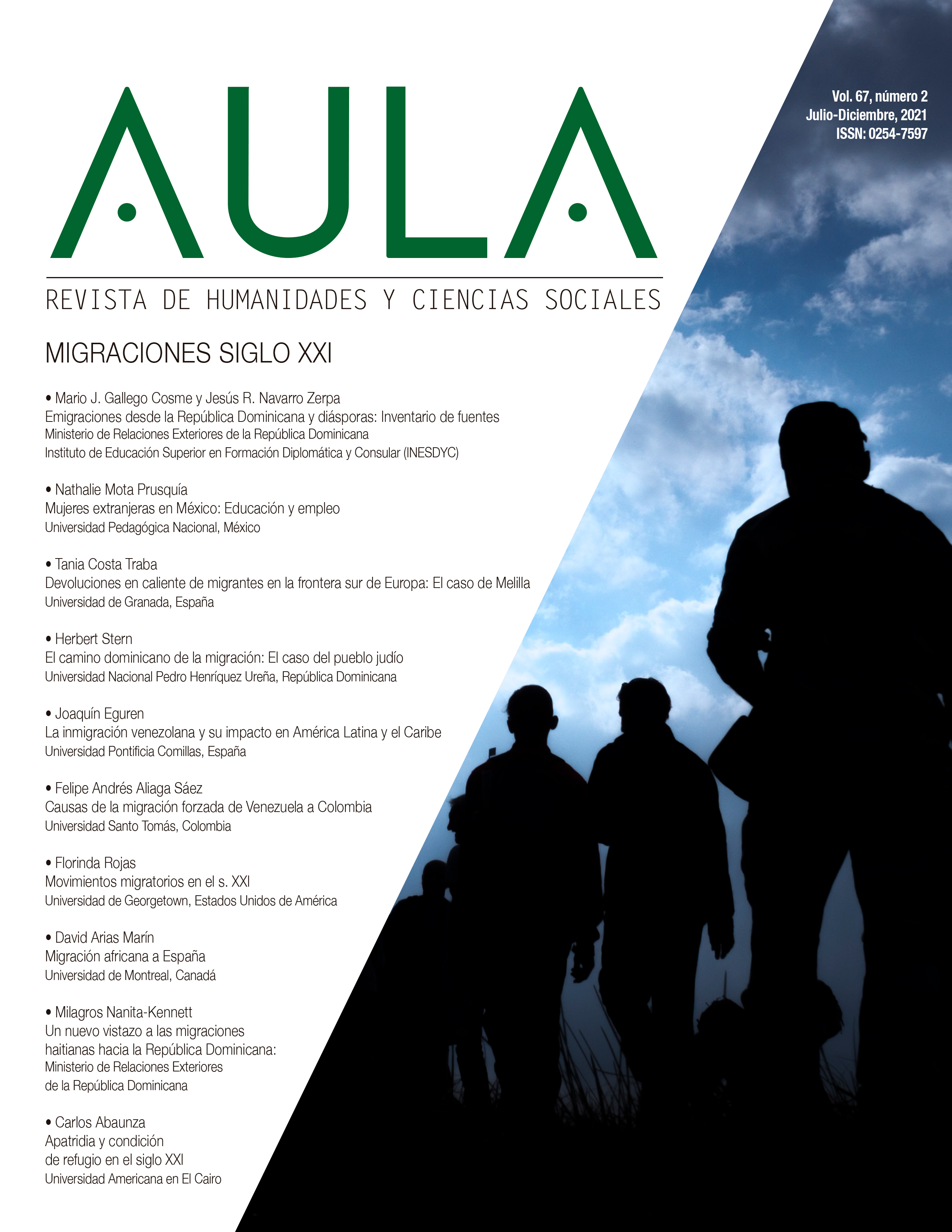A new look at haitian migrations to the Dominican Republic: Introduction to a comparative methodology
Published 2021-07-02 — Updated on 2023-06-01
Versions
- 2023-06-01 (2)
- 2021-07-02 (1)
Keywords
- Haiti,
- development,
- Dominican Republic,
- migration,
- social disparities
How to Cite
Copyright (c) 2021 AULA Revista de Humanidades y Ciencias Sociales

This work is licensed under a Creative Commons Attribution 4.0 International License.
Abstract
Migratory flows from one country to another and from less developed areas to areas that offer the potential for a better quality of life, have always existed due to the intrinsic need of human beings to satisfy, at least, a series of basic requirements such as they are water, food, work and health services. This article introduces a methodology that allows us to analyze the origin of migratory flows and the way in which they can influence the economic, political and social development of a country. Within the context of the pull and push theory, the methodology qualitatively analyzes a series of historical events that have served as an accelerator or retarder of Haitian migratory flows to the Dominican Republic. In the second part, it introduces a quantitative analysis that makes it possible to compare —in a simple way— a group of nations in order to understand their economies, fragilities, social disparities and governance; establish the position of the Dominican Republic and Haiti vis-à-vis them; and determine if there is a force of attraction or push between these two nations in terms of migration. In the same way, the advantages or disadvantages that a continuation of the Haitian immigration flows to the country may bring are examined, and what would happen if the economic, political and governance systems of both nations were to merge into one. The list of countries to be examined includes Argentina, Bolivia, Brazil, Chile, Colombia, Costa Rica, Ecuador, El Salvador, Guatemala, Haiti, Honduras, Mexico, Nicaragua, Panama, Paraguay, Peru, the Dominican Republic and Uruguay. The article ends by making a number of observations based on the information collected and the results of the analyzed data.
Downloads
References
- Coulange-Méroné, S. (2018). Elementos So-ciohistóricos para Entender la Migración Haitiana. Universidad Autónoma del Es-tado de México.
- Datosmacro.com (2021). Expansión. https://datosmacro.expansion.com
- Escolano Giménez, A. (2010). La rivalidad internacional por la República Dominicana desde su independencia hasta la anexión a España (1844-1861) [tesis doc-toral]. Universidad de Alcalá.
- Forbes. (2017). Deuda pública haitiana. ht-tps://www.forbes.com
- Gaira Carreriro, F. (2018). Cuando no Basta el Crecimiento. Razones de la rigidez de la Pobreza en la República Dominicana. Banco Mundial, Poverty Reduction.
- García Muñiz, H. (2005). Lashistorias azucareras de la República Do-minicana y Puerto Rico 1870-1930. Revista de Indias.
- Ley 285 sobre Migración. (15 de agosto de 2004). https://dgii.gov.do/sobreTarjeta-Turista/Documents/Ley285-04.pdf
- Ministerio de Economía, Planificación y Desarrollo. (9 de septiembre 2016). La Gestión y la Protección de las Fuentes de Agua de la isla Hispaniola. https://publicaciones/la-explotacion-de-los-re-cursos-mineros-en-el-area-de-la-fronte-ra-dominico-haitian


